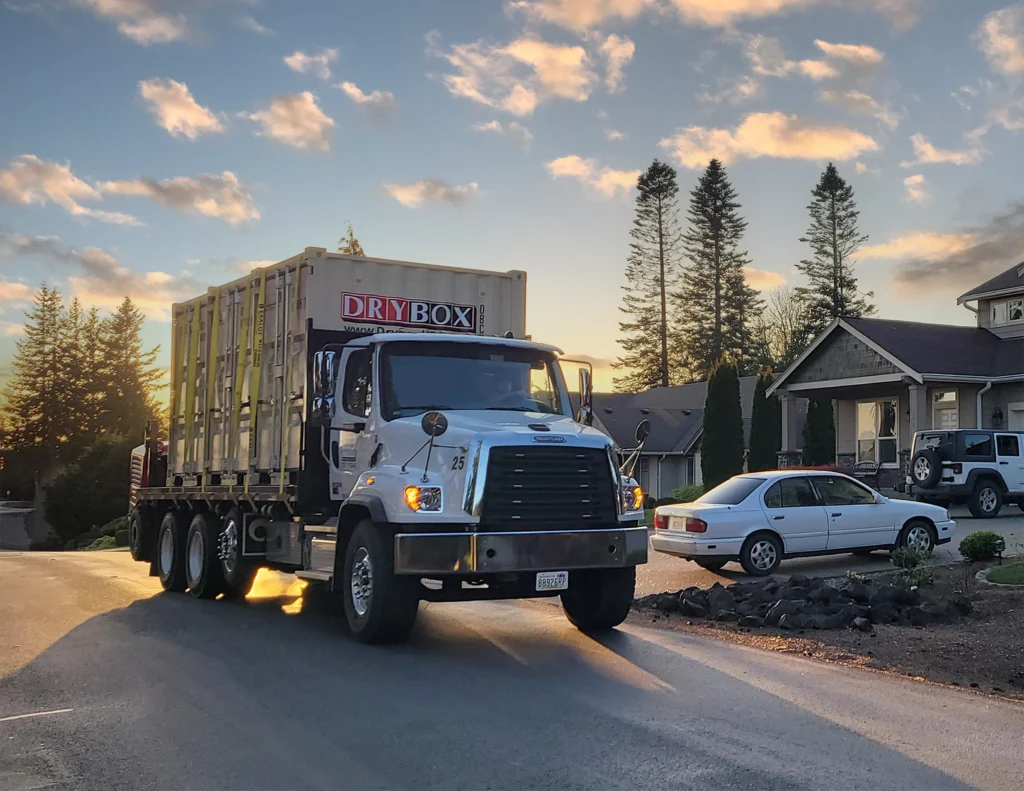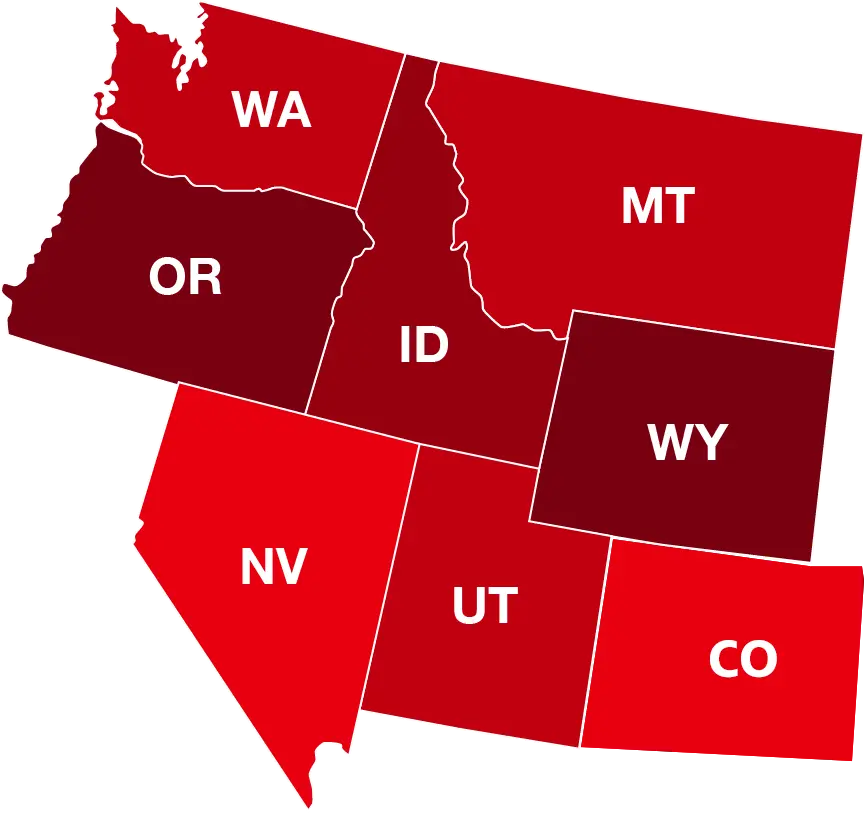Preparing Your Home For A Storage Container Delivery

As the popularity of using shipping containers for storage and alternative living spaces continues to rise, many homeowners are considering the addition of these versatile structures to their properties.
Whether for extra storage, a home office, or a unique living space, a shipping container offers a durable and secure option. However, before you welcome a shipping container to your property, proper shipping container site preparation is necessary.
So, how do you prepare your space for a storage container delivery?
How Are Shipping Containers Delivered
Let’s take a step back and talk about how these hefty containers actually get delivered.
Given their size and weight, shipping containers require specialized equipment for transportation. Typically, you’ll see them arriving on either a tilt-bed truck or a flatbed truck with a crane.
Tilt-bed trucks are great for smaller containers or when there’s plenty of room for the truck to tilt the bed and gently slide the container off. For larger containers or when you need precise placement, a flatbed truck with a crane does the job—it lifts the container off the truck and sets it down exactly where you want it.
How Do You Prepare Ground For A Shipping Container?
Getting the ground ready for a shipping container is important to ensure that your container stays stable and in good condition for a long time.
Here’s a step-by-step guide to help you prepare the ground effectively:
Select the Location
First, you need to pick a flat, level area to place your container. Make sure the site is clear of debris, rocks, and vegetation. Think about how often you’ll need to access the container and choose a location that’s convenient for you—you may also need to consider the direction the doors will face for easy access.
Clear and Level the Ground
Next, use a shovel or bulldozer to clear the area. Remove roots, stones, and other obstacles that might affect the container’s stability.
Ensure Proper Drainage
Good drainage is essential to prevent water from pooling around the container, which could lead to rust and structural damage. To achieve this, create a slight slope away from the container site to direct water away.
Lay a Base Layer
To provide a stable base, consider laying a layer of gravel or crushed stone. This layer helps with drainage and prevents the container from sinking into the ground—and a simple but effective way to ensure the container remains stable.
Compaction
Compact the base layer to make sure it is firm and stable. This step is necessary to prevent the container from shifting or settling over time. Use a compactor to press down the gravel or crushed stone until it is well-packed and solid.
Check for Levelness
Finally, use a level to ensure the ground is perfectly level. This will prevent stress on the container’s structure and doors, making it easier to open and close them.
What Is The Best Foundation For A Storage Container?
Choosing the right foundation for your storage container is essential for its stability and longevity. Here are some of the best foundation options available, each with their own benefits:
| Foundation Type | Description | Benefits | Ideal For |
| Concrete Slab | A thick, flat slab of concrete providing a solid base. | Durable and stable; prevents movement; even weight distribution. | Long-term installations; permanent structures. |
| Concrete Footings | Individual concrete pads placed at corners and center of container. | Cost-effective; adequate support; prevents sinking. | Solid foundation without extensive work; cost-conscious projects. |
| Gravel Foundation | Layer of gravel or crushed stone spread and compacted to create a firm base. | Proper drainage; prevents sinking; easily adjustable. | Cost-effective solutions; areas needing proper drainage. |
| Timber Beams | Railroad ties placed perpendicular to the container for support. | Easy to install; can be moved; flexible. | Temporary installations; areas with less stable soil. |
| Piers or Pilings | Vertical supports driven into the ground. | Excellent stability; prevents water damage; elevates container. | Areas prone to flooding; long-term stability needs. |
Shipping Container Site Preparation
Preparing your site properly is important for the successful delivery and installation of your shipping container. Try to follow these steps so everything goes smoothly:
Assess the Site
Start by evaluating your chosen site to make sure it’s suitable for placing a shipping container. Look for any potential obstacles like trees, power lines, or buildings that could interfere with the delivery process. Clearing these obstacles ahead of time will make the delivery much smoother.
Measure the Space
Next, measure the area where you plan to place the container. Make sure the space is large enough not only to accommodate the container but also to allow room for the delivery truck to maneuver. Leave some extra space for future access or additional containers if needed.
Create Access Paths
Make sure there are clear paths for the delivery truck to reach the site. Remove any obstacles such as low-hanging branches, fences, or debris that might block the truck’s path.
Prepare the Foundation
Depending on the type of foundation you choose, prepare the ground accordingly. Whether it’s a concrete slab, footings, gravel base, timber beams, or piers, make sure the foundation is level and stable to support the container’s weight.
Mark the Placement
Use stakes and string to mark the exact placement of the container. This will help guide the delivery team during installation.
Communicate with the Delivery Team
Coordinate with the delivery team to ensure they have all the necessary information about the site. Provide clear instructions and address any concerns they might have.
What Happens To Shipping Containers After Delivery
Once the shipping container is delivered and placed on your property, there are several steps to make the most of this versatile structure:
Secure the Container
First, make sure the container is properly secured to the foundation to prevent any movement. Use tie-downs or anchor bolts for added stability.
Inspect for Damage
Check the container for any signs of damage that might have occurred during delivery. Address any issues promptly to avoid further damage.
Modify and Customize
Depending on your intended use, you might need to modify the container. This could involve adding windows, doors, insulation, electrical wiring, or ventilation to suit your needs.
Regular Maintenance
Perform regular maintenance to keep the container in good condition. This includes inspecting for rust, checking seals, and ensuring proper ventilation to prevent moisture build-up.
Utilize for Storage or Living
Once the container is ready, start using it for storage, as a workspace, or as a living space. Make sure it meets all local building codes and regulations for its intended use.
Monitor for Shifts
Regularly check the container to confirm it remains level and stable. Address any shifts or settling immediately to prevent structural issues.
Conclusion
Preparing your home for a storage container delivery might seem daunting, but with a little planning, it can be a smooth and rewarding process. Proper shipping container site preparation is key—understanding delivery logistics, getting the ground ready, and choosing the right foundation are all important.
Once the groundwork is laid, assessing the area for obstacles, accurately measuring space, and ensuring clear access paths will pave the way for a hassle-free delivery. After your container arrives, securing it properly, inspecting it for any damages, and customizing it to suit your needs will transform it into a valuable asset.
With regular maintenance and vigilant monitoring, your container will stay in excellent condition, providing a reliable and versatile addition to your property for years to come!
Ready to Transform Your Space with a Shipping Container?
If you’re looking to add a durable and versatile storage container to your property, Dry Box has you covered. Our range of robust, tamper-resistant containers comes in various sizes and can be customized to fit your specific needs.
Contact us today to learn more about our services and find the perfect container for you. Reach out now and start your journey to a more organized and efficient space with our reliable shipping containers!









